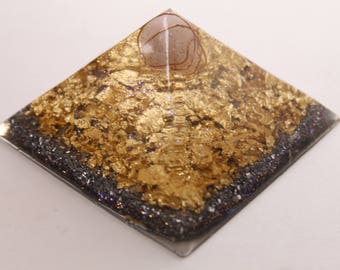https://canvas.instructure.com/eportfolios/2026851/Home/Details_of_Emf_Blocking_Radiation_2 if you live in an apartment or house, or you just need to ensure that your house is free from EMFs, there are a number of methods to reduce exposure. One of the most effective is to reduce the use of electronic devices. It is also possible to use EMF blocker paint to block EMF radiation from reaching your house. Another way to shield your house against EMF radiation is to put up an RF shielding canopy. It is a type made of net which contains EMF shielding. It is utilized to stop EMFs from entering a room. Another option is to have your home fitted with an electrical enclosure. They are referred to as Faraday cages.

A number of studies have proven studies have shown that nonionizing EMF has antiproliferative properties in HCC cells. The mechanism that drives AM RF EMF's anticancer activity in vitro is thought to be based on the downregulation in cancer-related stem cells. This could be the reason for the long-term effects observed in certain patients suffering from advanced HCC. However, the mechanism behind AM RF EMF's effect in patients with cancer is not clear.
Effects on the effects of AM RF EMF on HCC tumor growth in vivo were studied in mice. https://dugan-blalock-2.technetbloggers.de/information-about-emf-blocking-radiation-1681486860 were divided in three different groups. The first group was not exposed to RF EMF. Another group of participants was subjected to RF EMF at the same frequency to that used in humans. In the third, they were subjected RF EMF with HCC-specific modulation frequencies. The effects of HCCMF on tumors was evaluated against that of RCF. The results indicated that tumours treated with HCCMF had significant shrinkage. However, the tumors treated with RCF didn't show evidence of shrinkage of the tumor.
The mechanism of tumor-specific AM RF EMF may be based on the fact that tumor cells require Cav3*2 type voltage calcium channels for proliferation and down-regulation. AM RF EMF's antiproliferative effect on HCC cells is caused through CACNA1H, a protein that regulates the Ca2+ influx specific to tumors. The findings suggest that CACNA1H could have wider implications for diagnosis and treatment of various cancers.
The tumours in the controls were never exposed EMF from RF, and fed a normal diet of mice. emf blocking clothing in the HCCMF group were treated with Huh7 cells after they were five-seven weeks old. The tumours were then euthanized after they had a high burden.
The tumors of the three groups also showed different growth curves. The tumors treated with HCCMF showed a significant decrease in the size of the tumour after eight weeks. However, tumors which were treated by RCF showed no reduction in size. The difference was significant. The tumors treated with RCF showed necrosis, which is common when tumors are that are exposed to RCF. It is possible that the necrosis was caused by an absence of oxygen in the larger cancers.
In summary, the results indicate that AM RF EMF exhibits anticancer activity in vitro and in vivo. Several studies have shown that AM RF EMF produces measurable reduction in tumours in HCC patients. It is possible that AM RF EMF produces these effects because of CACNA1H, a protein involved in tissue-specific Ca2+ influx. Additionally, AM RF EMF may exert a sustained influence on the growth of HCC tumours in living tissue.
